Creating a beautiful and inviting living space starts with choosing the right colors for your apartment decor. The color palette you select can greatly impact the ambiance and overall feel of your home.
A well-designed color scheme can make your apartment feel more spacious, cozy, or vibrant, depending on your preferences. With so many options available, it can be overwhelming to decide on the perfect colors for your apartment.
In this article, we will guide you through the process of selecting a color palette that suits your style and enhances your living space.
Color Theory Basics
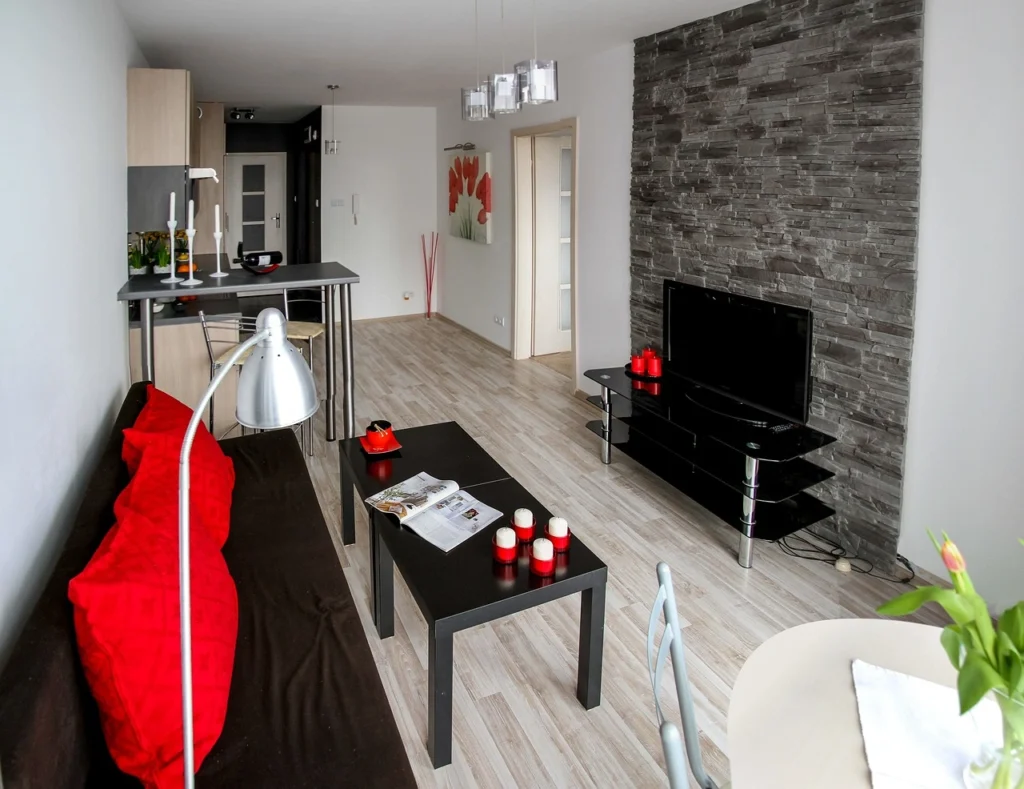
The right colors can transform your apartment from a mere living space into a home that reflects your personality. Color theory is a fundamental aspect of interior design that can make or break the ambiance of your apartment.
At its core, color theory involves understanding how different colors interact with each other and the emotions they evoke. It’s a complex subject, but grasping its basics can significantly enhance your apartment’s decor.
Warm colors, including reds, oranges, and yellows, are known for creating a cozy and inviting atmosphere. They can make a room feel more energetic and vibrant. However, using too many warm colors can make a space feel overwhelming.
Cool Colors and Their Impact

Cool colors, such as blues, greens, and purples, have a calming effect and can make a room feel more spacious. They are ideal for creating a relaxing environment, perfect for bedrooms or bathrooms. Nonetheless, an overabundance of cool colors can make a space feel cold and uninviting.
Balancing warm and cool colors is key to creating a harmonious interior. By understanding the psychological impacts of different colors, you can make informed decisions about your apartment’s decor. For instance, combining warm and cool colors can create a balanced and visually appealing space.
In interior design, applying color theory effectively means considering the natural light, furniture, and overall aesthetic you want to achieve. By doing so, you can harness the power of color theory to enhance your living space.
Assessing Your Apartment’s Features
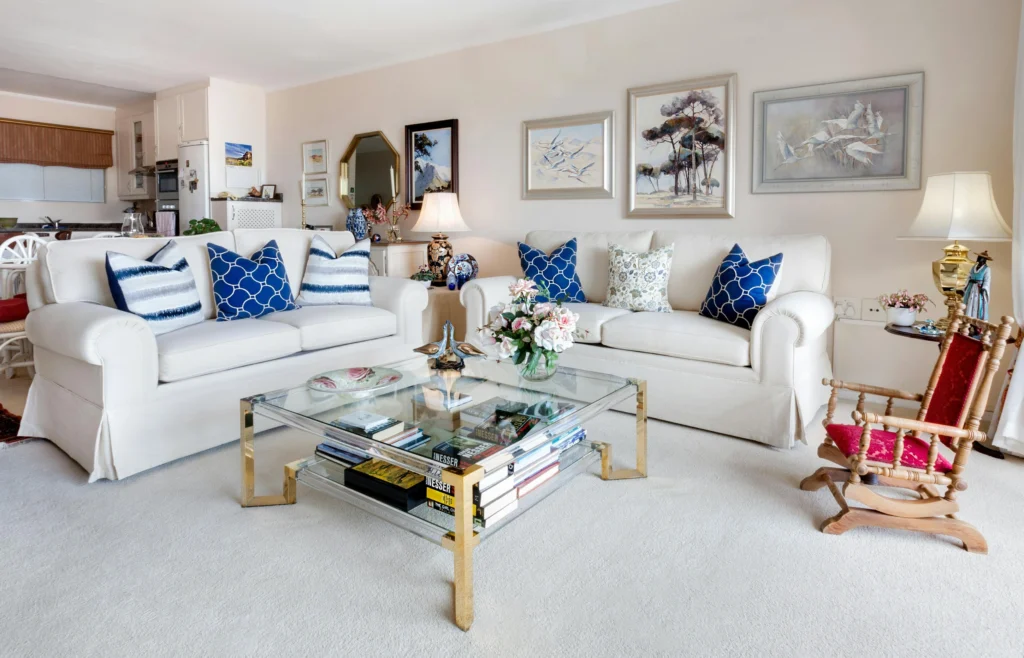
Your apartment’s unique features play a significant role in determining its color palette. When it comes to home decoration, understanding these features is crucial for making informed decisions.
One of the primary factors to consider is the direction your apartment faces. This can significantly impact the lighting and overall ambiance of your space.
North vs. South Facing Rooms

Rooms that face north receive softer, cooler light, while south-facing rooms are bathed in warmer, brighter light. This distinction is vital when choosing colors for your apartment.
For instance, north-facing rooms might benefit from warmer color tones to counterbalance the cool light, whereas south-facing rooms can often handle cooler tones that won’t get overwhelmed by the abundant sunlight.
Assessing your apartment’s features, including its orientation, window size, and architectural style, will help you make home decoration choices that enhance its natural beauty.
By considering these apartment features, you can select a color palette that not only looks great but also improves the livability of your space.
How to Choose the Right Colors for Apartment Decor
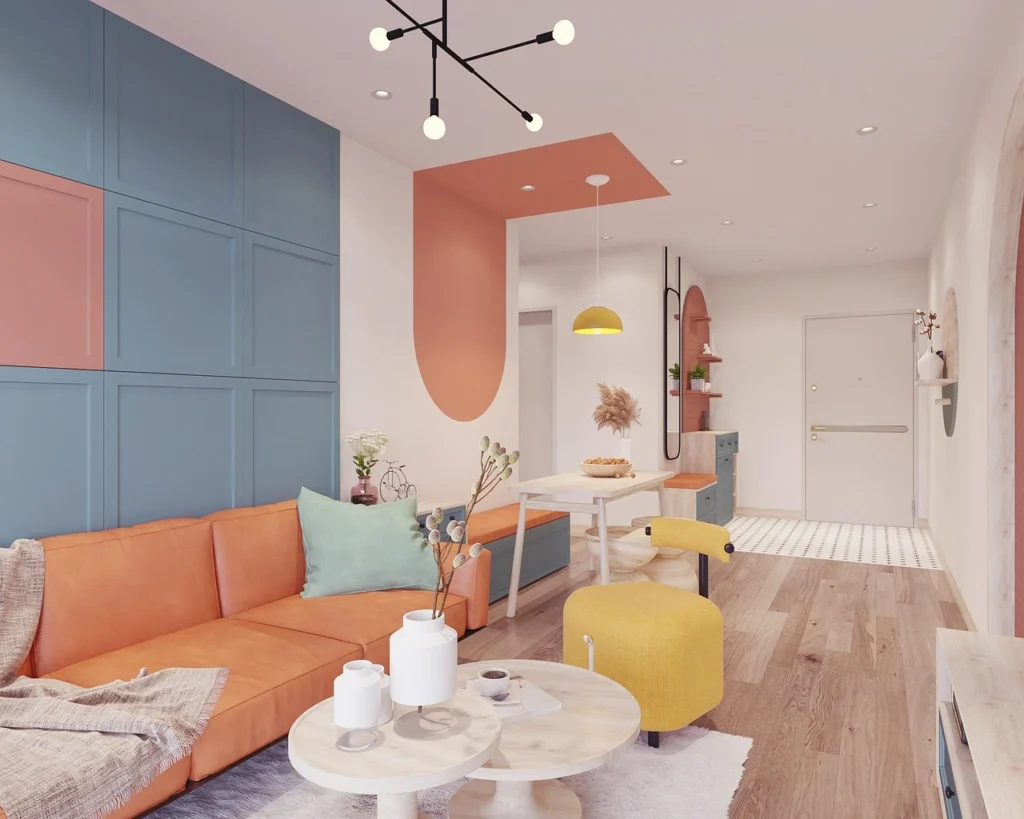
Choosing the right colors for your apartment decor can be a daunting task, but with a few simple tips, you can create a beautiful and harmonious space. The key is to understand how different colors interact with each other and with the features of your apartment.
Start by considering the natural light in your apartment. Colors can look very different under various lighting conditions, so it’s crucial to observe how the light affects the colors you’ve chosen throughout the day.
When selecting a color palette, it’s helpful to follow established decorating tips. One effective method is the 60-30-10 color rule, which provides a balanced approach to choosing colors.
60-30-10 Color Rule
The 60-30-10 rule suggests that 60% of the room should be a dominant color, 30% a secondary color, and 10% an accent color. This rule helps create a cohesive and visually appealing color scheme.
Transitioning Colors Between Rooms
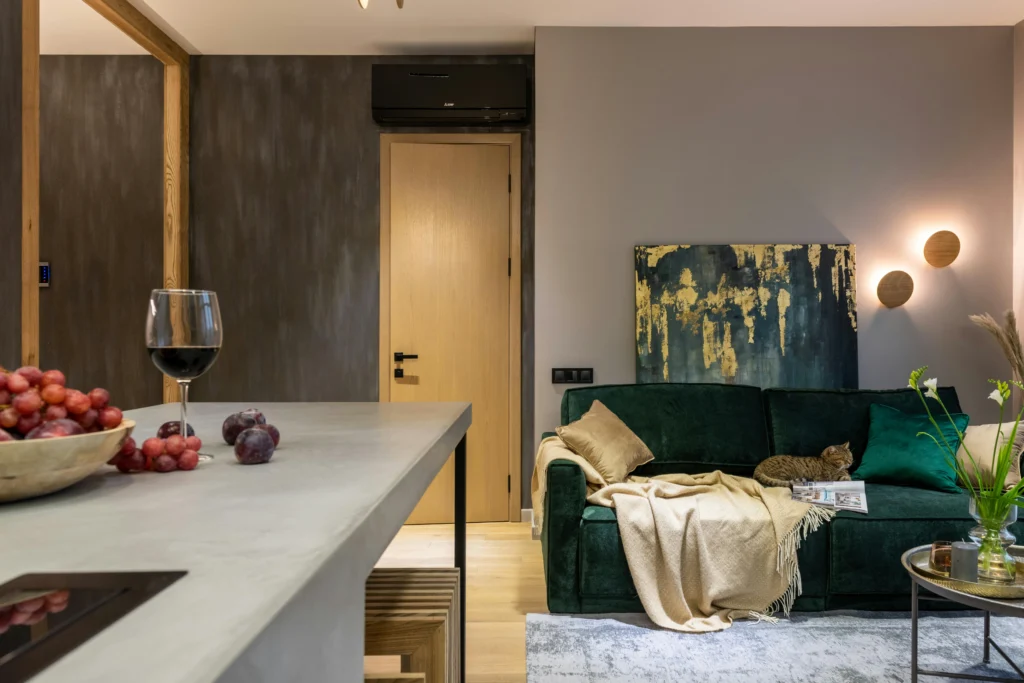
Transitioning colors between rooms is another important consideration. You can choose to use a consistent color palette throughout your apartment to create a sense of continuity, or you can select different colors for each room, ensuring they complement each other.
A successful color transition can be achieved by using a unifying element, such as a common color or texture. This helps to create a flow between rooms, making your apartment feel more spacious and connected.
By applying these decorating tips and considering the unique features of your apartment, you can choose a color palette that enhances your living space and reflects your personal style.
Applying Colors in Different Apartment Spaces
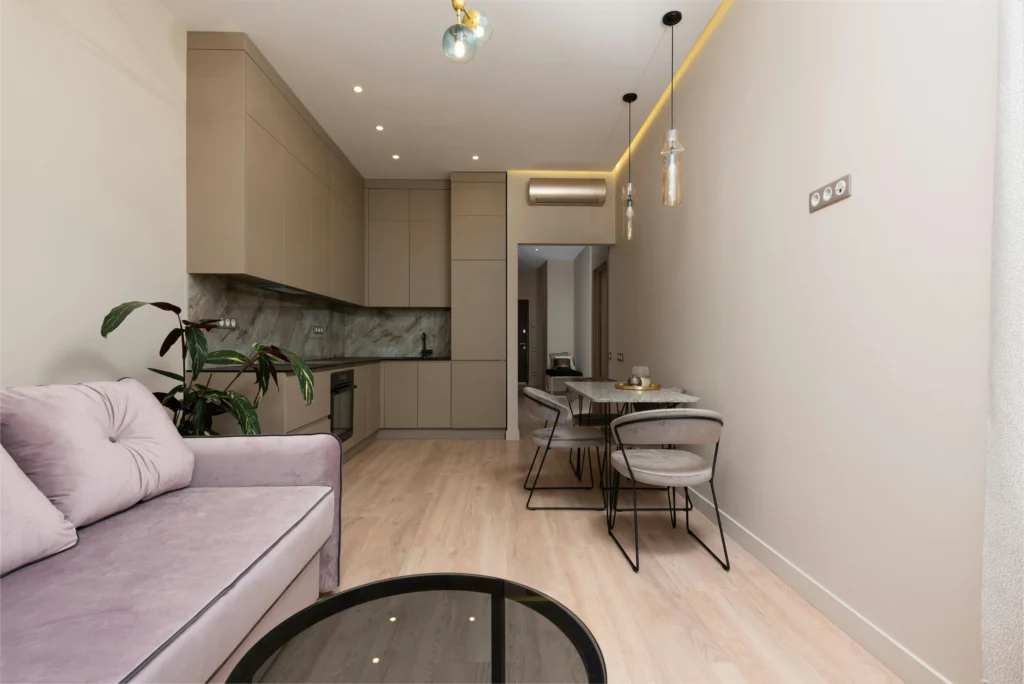
Different apartment spaces demand different color strategies to achieve a cohesive look. When designing your apartment, it’s essential to consider the unique characteristics of each space and how color can enhance them.
In living rooms, for instance, warm colors like beige and terracotta can create a welcoming atmosphere. These colors are perfect for spaces where you spend a lot of time relaxing or entertaining guests. On the other hand, bedrooms benefit from calming colors such as light blue or pale green, which promote relaxation and serenity.
Kitchens and dining areas can be treated with vibrant colors to stimulate appetite and conversation.
Kitchens and dining areas can be treated with vibrant colors to stimulate appetite and conversation. Colors like red or orange can be used as accent walls or through accessories to add energy to these spaces.
Bathrooms, being more intimate spaces, can utilize soft, neutral tones to create a spa-like ambiance. Soft whites, grays, or taupes can make these spaces feel more luxurious and relaxing.
To maintain a cohesive look throughout the apartment, it’s crucial to have a unifying element, such as a recurring color or texture, that ties all the spaces together. This can be achieved through furniture, flooring, or decorative elements.
By thoughtfully applying colors in different apartment spaces, you can create a harmonious and functional living environment that reflects your personal style and meets your needs.
Conclusion
By understanding the basics of color theory and assessing your apartment’s unique features, you can make informed decisions when selecting colors for your apartment decor.
Applying the right colors to different spaces within your apartment can greatly impact the overall ambiance and functionality of each room. With the knowledge gained from this article, you can now confidently choose colors that enhance your living space.
Effective color selection is crucial in creating a harmonious and inviting atmosphere in your apartment. By considering the principles of color theory and your apartment’s specific characteristics, you can create a beautiful and functional living space that reflects your personal style.

